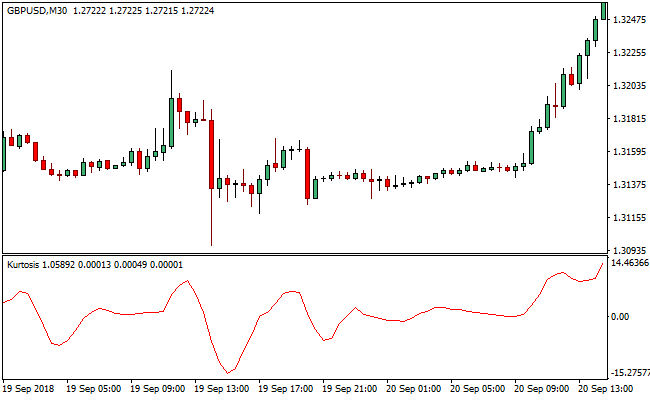if a monopoly or a monopolistic competitor raises their prices, then: How the AI Wars Are Proving That Google Isn’t a Monopoly
Contents:

New trade theory places importance on the model of monopolistic competition for explaining trends in trade patterns. New trade theory suggests that a key element of product development is the drive for product differentiation – creating strong brands and new features for products. Therefore, specialisation doesn’t need to be based on traditional theories of comparative advantage, but we can have countries both importing and exporting the same good.

Court Laughs Off OAN Conspiracy Network’s Claim It Was … – Techdirt
Court Laughs Off OAN Conspiracy Network’s Claim It Was ….
Posted: Wed, 18 Jan 2023 08:00:00 GMT [source]
As long as the firm is earning positive economic profits, new competitors will continue to enter the market, reducing the original firm’s demand and marginal revenue curves. When price is equal to average cost, economic profits are zero. Thus, although a monopolistically competitive firm may earn positive economic profits in the short term, the process of new entry will drive down economic profits to zero in the long run. Remember that zero economic profit is not equivalent to zero accounting profit. A zero economic profit means the firm’s accounting profit is equal to what its resources could earn in their next best use.
Perfect competition and monopoly stand at _____________ of the spectrum of competition. Heavy Cream is in Aisle A31 of the Dairy section in Walmart. The most popular heavy cream in Walmart is the Horizon Organic Heavy Whipping Cream that costs …
What Is a Monopolist’s Profit-Maximizing Level of Output?
This means that the cellular market is certainly not perfectly competitive as cell phone companies have some ability to change prices. Therefore, the demand faced by each of the cellular companies will be more elastic than market demand, but not perfectly elastic. Let’s explore how these monopolistic competitive firms set prices. In both perfect competition and monopolistic competition, each firm a. Sells a product that is at least slightly different from those of other firms.
Postal Service’s legal monopoly on delivering first-class mail, consumers often have many alternatives such as using standard mail through FedEx or UPSor email. For this reason, it is uncommon for monopolistic markets to successfully restrict output or enjoy super-normal profits in the long run. All firms maximize profits when their marginal cost is equal to the marginal product. This dollar amount should also be the selling price that maximizes profits.
MonopolisticMonopolistic refers to an economic term defining a practice where a specific product or service is provided by only one entity. Hence the entity supplying the product or service has the dominance in its price-fixing and deciding on the market output. Under monopoly, we assume that the sellers and buyers have complete knowledge regarding market activities. But under monopolistic competition, there is imperfect knowledge on the part of buyers and sellers. III. Both perfectly competitive and monopolistically industries are characterized by free entry and zero profits in the long run.
decline in quantity demanded will be larger for the
If the firms merged together, there is no certainty how they would behave. Though the preferences and incentives are different for Sanders and The Department of Justice, the logic is the same. If they decide that Google is a monopoly, and they are wrong, they pay no cost. So they say that Google is a monopoly, and they probably believe it.

One characteristic of a if a monopoly or a monopolistic competitor raises their prices, then is that it is a profit maximizer. Due to more players in monopolistic competition, there is competition in sales and prices. Monopoly enjoys the sole control of the overall characteristics of its products. The monopoly and monopolistic competition are different as the basic difference is the number of players in the markets. At the same time, monopolistic competition requires at least two but not many sellers. Under monopoly, product produced may or may not be homogeneous.
Understanding Monopolistic Markets
It means for a small increase in https://1investing.in/ , the monopolist has to reduce the price to greater extent. 15 shows less elastic AR and MR. Under monopolistic competition also, the revenue curves are different but in this case, the revenue curves are more elastic. It means small fall in price, will lead to big increase in demand. Even though monopolistic competition does not provide efficiency, it does have benefits of its own. Product differentiation is based on variety and innovation. Remember that in monopolistic competition, there are few barriers to entry.
- These reactions against pure competition have triggered a search for other models that could explain the above cases.
- It is common, for instance, for cities or towns to grant local monopolies to utility and telecommunications companies.
- The below given diagram in the shows the loss position of a Monopoly firm in the short run.
- The most popular heavy cream in Walmart is the Horizon Organic Heavy Whipping Cream that costs …
Although the process by which a monopolistic competitor makes decisions about quantity and price is similar to the way in which a monopolist makes such decisions, two differences are worth remembering. Second, a monopolist is surrounded by barriers to entry and need not fear entry, but a monopolistic competitor who earns profits must expect the entry of firms with similar, but differentiated, products. At a glance, the demand curves that a monopoly and a monopolistic competitor face look similar—that is, they both slope down.
monopoly
Therefore Monopolists are also known as quantity Adjusters. Market penetration is a measure of how much a product is being used by customers compared to the total estimated market for that product. Monopolistic competition occurs when many companies offer products that are similar but not identical. The firms AR curve and its SAC curve will just touch each other at its chosen output.
One of the most controversial criticisms of advertisement in the present day is that of the predominance of advertising of foods high in sugar, fat, and salt specifically to children. Additionally, children may not understand that they are being sold something, and are therefore more impressionable. The other criticisms include the change that are brought by those advertisements on the society and also the deceiving ads that are aired and published by the corporations. Cosmetic and health industry are the ones which exploited the highest and created reasons of concern. Thus, in this context it is clear that there is no unique relationship between price and quantity supplied by the monopolist. So the concept supply curve is not relevant to themonopolist or we can say that supply curve of the monopolist is indeterminate.

In many respects, this is an objection against high prices, not necessarily monopolistic behavior. More recently, short-run private companies may engage in monopoly-like behavior when production has relatively high fixed costs, which causes long-run average total costs to decrease as output increases. The effect of this behavior could temporarily allow a single producer to operate on a lower cost curve than any other producer. Under monopoly and monopolistic competition, a firm cannot determine both price and output at the same time.
Effects of Monopolistic Markets
II. Both perfectly competitive and monopolistically competitive firms produce where price equals marginal cost. It involves many firms competing against each other, but selling products that are distinctive in some way. Firms producing such products must also compete with other styles, flavours and brand names. The term “monopolistic competition” captures this mixture of mini-monopoly and tough competition. Watch this video for a brief overview of monopolistic competition and to see a comparison between perfect competition, monopolistic competition, and monopolies. The video goes on to explain the cost curves for a monopolistically competitive firm and how it compares to those in different competitive settings, which we’ll cover in more detail later in the module.
What Is the Cournot Competition Economic Model? – Investopedia
What Is the Cournot Competition Economic Model?.
Posted: Sat, 25 Mar 2017 18:27:14 GMT [source]
The marginal cost of production is the change in the total cost that arises when there is a change in the quantity produced. In calculus terms, if the total cost function is given, the marginal cost of a firm is calculated by taking the first derivative with respect to the quantity. The level of output that maximizes a monopoly’s profit is when the marginal cost equals the marginal revenue. In the short run, both under monopoly and monopolistic competition, the firm can enjoy super-normal profits, normal profits or can sustain losses. But in the long run, firm under monopolistic competition will enjoy only normal profits.
Under monopoly, if market conditions are larger, the monopolist may produce beyond the optimum capacity. Since a monopolist has the control over the entire supply, hecan influence price. If a monopolist want to increase price, he will control supply.
